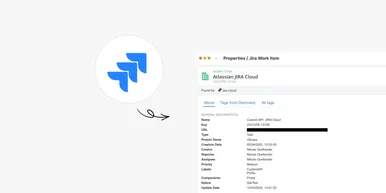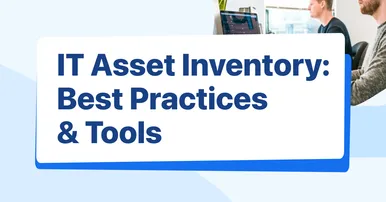
Active Directory Best Practices - 10 Ways to Improve Your Active Directory
Active Directories are inevitable for IT-technicians and they often come with a set of tedious tasks that need to be done sooner or later. After speaking to several technicians and experiencing multiple Active Directories at first hand, I realized that a lot of AD's don't follow the Active Directory best practices and are a mess. But in some cases it can definitely be worth it! An overly complex and outdated AD can tie up a lot of time from your technicians. So in this article, I decided to list the Active Directory best practices and go over 10 ways to improve an Active Directory, and hopefully help IT-departments get more efficient.
1. Organize your Active Directory
The structure of your AD, how it’s set up and organized are very important factors for a successful administration. If everything has been done correctly, your AD environment should be fully documented and anybody on the IT team should have a clear understanding of where everything can be found.
With an organized Active Directory, you don’t need to spend hours hopelessly wandering around the AD looking for an object. And every time a new object is created, you and your team knows exactly how to handle it. Setting up the optimal AD structure and what to think about when doing so is a whole another article in itself. In fact, if you are interested you can read more about it here.
2. Implement the Least Privilege Principle
When you’re happy with how your Active Directory is set up you can start doing minor changes and improvements. First thing you need to be sure of is that the human resources in your environment follow the “Least Privilege Principle”, i.e. at any given point of time, all users must have the exact amount of permissions and access that they need. No more and no less.
What sounds like an easy task, can snowball into an avalanche when the number of users grows. This can be solved by applying a Role-Based Access model, which means that you don’t assign permissions straight to users. First, you assign permissions to a role and then assign the role to a user. So if you want to change user’s access rights, you change his/her role. In the future, if you want to modify a role, you do it in a single place instead of doing it manually for every single user.
3. Establish a Self Service Portal
Another way to reduce time wasted on mundane tasks, such as changing the personal information of a single user, is to set up a self-service portal where users can change certain information by themselves. A simple yet effective solution for making your AD more autonomous and self-supporting. But be careful and aware of the security risks that may arise.
4. Optimize Password Resets
Now onto one of the biggest time consumers out there, resetting passwords! A survey conducted by Cyclonis showed that 50 % of the respondents forget their passwords at least four times each year and another 27 % forget their passwords 10 or more times a year.
Imagine an organization with 1000 employees. Let’s assume 50% of all employees forgets their password 4 times a year and it takes 5 minutes for the service desk to reset the password. That ends up taking 10000 minutes of the technicians time, or roughly 7 days a year! And this doesn’t even take the 27% into account. This is in no way, shape or form an efficient way of handling password resets.
Instead, give the users an opportunity to reset their passwords by themselves. There are several ways to do this, for example by entering an SMS code that gets sent to their work phone or answering a couple of security questions. Additionally, if you already have a self-service portal, this function can just be added onto the platform. This way your technicians can do real IT work that actually creates value for your employees and customers.
5. Utilize Multiple Global Catalogs
For organizations operating Active Directories with information for multiple sites, it’s important to have a global catalog at each site. This way AD clients will not need to traverse long distances to look up information and the amount of traffic trying to access a single global catalog is reduced, potentially improving the speed and performance of the AD.
6. Use Dedicated Domain Controllers
In an effort to save some money, a lot of organizations have their domain controller servers running several roles. But to follow Active Directory best practices, your domain controllers should run on dedicated servers. While you might be saving some money you are putting your domain controller at risk by affecting the server’s performance, reducing security, and complicating the process of backing up or restoring the server.
7. Have Multiple DNS Servers
Another common mistake that smaller organizations can be guilty of is only having one DNS server. Sure, some costs are saved, however, the AD which is dependent upon the DNS service will be at a standstill if the DNS server fails. Compare the potential loses that may occur if the DNS server is down with the cost of having another DNS server, and you’ll quickly see the benefits.
8. Apply 2-factor Authentication
Using two-factor authentication (2FA) is a simple way to make your Active Directory more secure. 2FA is supported in the Active Directory and it basically means that users need to present something in addition to their password when logging in to their account to prove their authenticity. This prevents password theft from giving hackers access to AD accounts. If this sounds too complicated for your organization as a whole, contemplate implement 2FA for at least the domain admins.
9. Schedule Routine Clean-Ups
Last but not least, clean up your Active Directories. Something so simple can have massive effects! Don’t let stuff pile up until it’s all an incomprehensible mess that nobody wants to navigate through. This does not mean that you need to clean up every day, week or month. But consider having routine clean-ups every 6 or 12 months. A clean AD also makes onboarding of newcomers much easier.
10. Get vScope!
If you’re already following most of these tips, congratulations! Your active directory is better than most out there, and if you’re not don’t worry, vScope is here to help! Combine the power of vScope’s Asset Discovery with the Active Directory Documentation Pack and you’ll get a detailed overview of your Active Directory right away! With vScope its easier than ever to get the information you need ,when you need it.
If you are more interested in optimizing and improving the security of your Active Directory, the Optimization or Security pack might be more suitable for you. The Active Directory Security pack is filled with analyses that help you improve the overall security of your AD, while the Optimization pack analyses help you streamline and clean up your AD.
(https://www.csoonline.com/article/554411/why-patching-is-still-a-problem-and-how-to-fix-it.html)
Related blog posts
All posts
How to rightsize databases with vScope
Rightsizing your IT environment is a powerful way to optimize costs. Preparing for database resource migration offers a great chance to phase out unused elements and save on operational and licensing budgets. In this article, we will learn how to investigate database usage, identify unused resources, and significantly lower costs for both migration and future operations.

Full Control Over Users and Issues in Jira with vScope
We're excited to announce the initial integration with Atlassian Jira, the leading platform for project and issue tracking. This enhancement will provide you with an improved overview of users, activity, and issues directly within vScope, simplifying the process of tracking license utilization, identifying opportunities for cost efficiency, and connecting issues to relevant services.

Securing Your Windows Data Center: Best Practices for IT Discovery Read Accounts
Gaining comprehensive visibility into your IT environment is crucial for accurate asset inventory, documentation, and effective security audits. However, granting overly broad access and permissions for user accounts can introduce significant security vulnerabilities, making the careful management of user account access a critical concern.

Getting Started with IT Governance in vScope
IT governance can be challenging when managing complex IT assets, documentation, and compliance. vScope simplifies this process with vScope Governance, a features that deliver complete visibility and streamlined collaboration across your network. In this post I will share three tips to get started and get the most out of IT governance in vScope.

The Ultimate Guide to IT Asset Inventory: Best Practices and Tools
In the ever-evolving world of technology, managing and maintaining IT assets is crucial for the smooth functioning of any organization. From hardware devices and software licenses to network equipment and digital resources, IT asset inventory plays a significant role in ensuring optimal performance and cost-effective operations.

What is CMDB: A comprehensive guide to configuration management database
The Configuration Management Database (CMDB) is a crucial component of IT Service Management (ITSM). It serves as a central repository for storing and managing information about the various configuration items (CIs) within an organization's IT infrastructure. In this comprehensive guide, we will delve into the basics of CMDB, its key components, its role in ITSM, the process of implementing it, and the best practices for managing it effectively.

Everything you need to know about ITSM
How can IT organizations better align their operations to support the main business objectives? How can technology facilitate more efficient workflows in the company as a whole and how can IT staff continuously improve its operations to deliver better IT services? These questions are some of the reasons why companies are investing in, implementing, and developing ITSM processes.

3 steps to reduce your IT costs
As IT is becoming an integral part of organizations the costs of IT are increasing. Many businesses are therefore looking for ways to reduce their IT costs. Here we present 3 tips to reduce your IT costs!

3 common challenges with ITAM
IT asset management (ITAM) is an incredibly efficient way to keep track of your IT assets — if it is executed correctly. In this article, we explore three common challenges associated with ITAM and how to solve them.